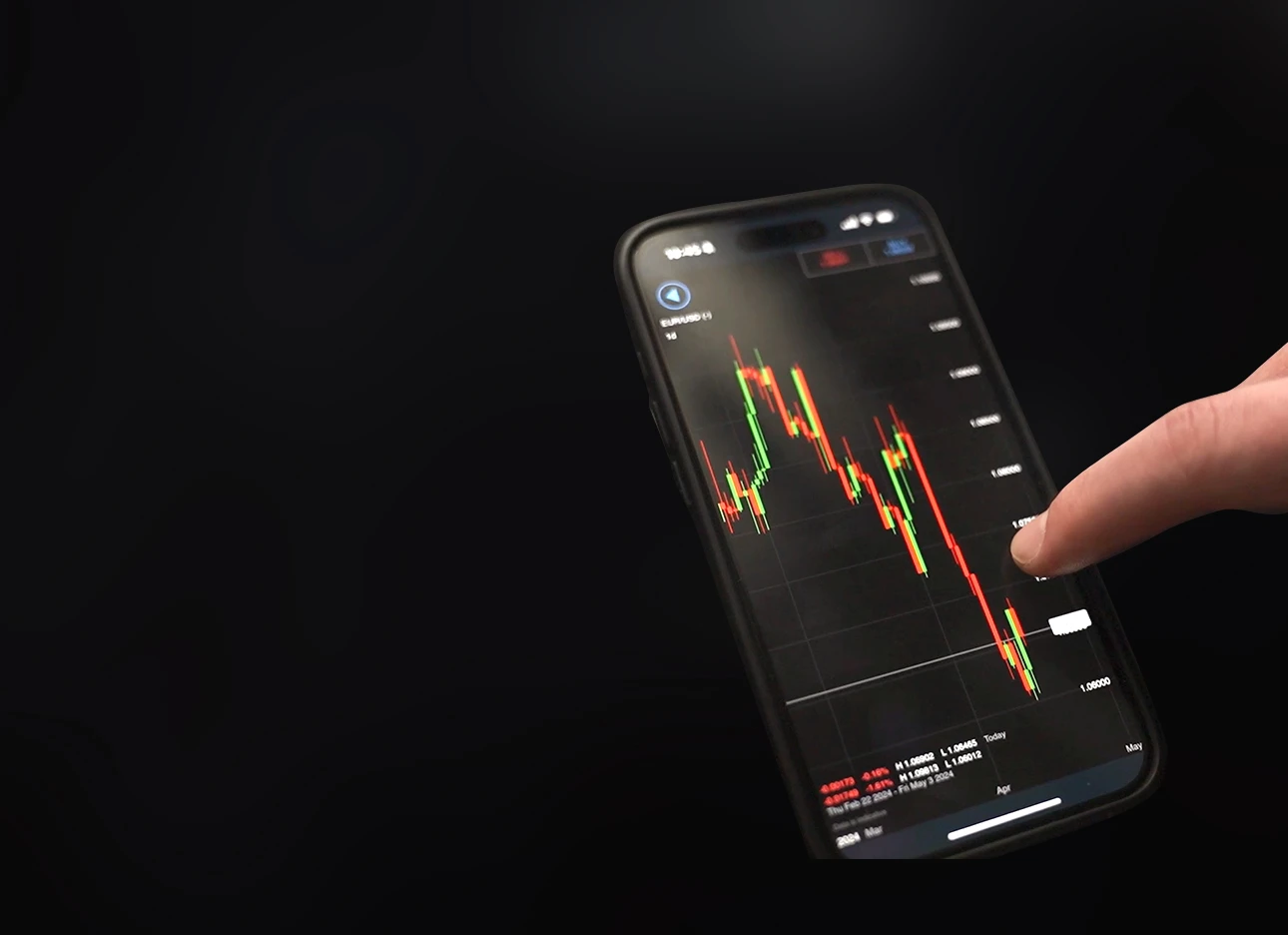You watch a currency pair swing after an interest rate call and ask Is Forex Trading Hard when one headline can erase a bet. Currency options let you limit loss, capture upside, and trade volatility with tools like call and put options, strike price selection, spread strategies, protective puts, and covered calls.
This guide explains option premiums, implied volatility, expiry, hedging, and position sizing in plain language so you can boost returns and manage risk more effectively.
To put those ideas into action, Goat Funded Trader's prop firm offers funded accounts, clear risk rules, and real capital to practice forex options strategies while protecting your own cash.
10 Best Forex Options Trading Strategies

1. Covered Call
Hold the currency pair long and sell a covered call option at a chosen strike and expiration to collect the option's premium. You keep the premium as income, but if the pair rallies above the strike, you may have to sell or be assigned, which caps upside. How you size the position and choose strikes changes your risk, reward, and margin requirements. Monitor delta, theta, and implied volatility because time decay benefits the seller, while rising volatility increases the cost of the call.
2. Protective Put
Buy a put option while keeping a long position in the underlying currency pair to set a floor on losses. The put gives the right to sell at the strike, so you limit downside while staying exposed to upside moves. This is structured as a long option hedge and resembles insurance, with the premium serving as the cost of protection. Watch how implied volatility and theta affect option value and plan for strike selection and expiration to match your risk horizon.
3. Bull Call Spread
Buy a call at a lower strike and sell a call at a higher strike with the same expiration to create a debit spread. That reduces the upfront premium and defines maximum profit at the short strike. The spread narrows exposure to delta and reduces vega sensitivity compared with a single long call. Track the spread width, break-even point, and margin; consider liquidity in both legs to avoid slippage and execution mismatch.
4. Bear Put Spread
Buy a higher strike put and sell a lower strike put with the same expiry to build a limited risk bearish position. The short put finances part of the long put, lowering cost and capping potential gain. This reduces net vega exposure versus buying a single put and keeps gamma manageable. Confirm the options chain liquidity and watch for pin risk as strike prices approach expiration.
5. Long Straddle
Buy a call and a put at the same strike and expiry to profit from a significant move in either direction. You pay two premiums, so breakeven requires a sizable move beyond the combined cost. This is a pure volatility play that benefits from rising implied volatility before the move but suffers from time decay afterward. Plan entries before expected high-impact events and size positions so that theta drag does not erode capital too quickly.
6. Long Strangle
Buy an out-of-the-money call and an out-of-the-money put with the same expiry to reduce the premium cost compared to a straddle. Profit requires a larger move because you are farther from the current price. The trade lowers upfront cost but increases the price move needed to reach breakeven, and it responds to shifts in the implied volatility skew. Manage both legs and watch margin changes if one leg moves deep in the money.
7. Iron Condor
Sell near-the-money puts and calls, and buy further out-of-the-money puts and calls to cap risk on both sides, forming a four-leg credit spread. You collect net premium and profit if the currency pair stays inside the short strikes. The trade benefits from time decay and falling implied volatility, while risk and reward remain limited. Keep position size tight, monitor for early assignment on short options, and keep an eye on volatility skews that can widen losses quickly.
8. Butterfly Spread
Construct a butterfly by combining long and short options at three strikes to concentrate profit near the middle strike while limiting downside. You can use calls or puts, and the structure produces a narrow profit band with low capital outlay. Butterflies have low vega sensitivity and can make sense when you expect minimal directional movement. Watch for execution risk across three legs and adjust for commission and bid-ask spreads to preserve the anticipated payoff.
9. Calendar Spread
Buy a longer-dated option and sell a nearer-term option at the same strike to capture differences in time decay and implied volatility between expirations. The trade profits if near-term time decay accelerates while longer-term implied volatility remains stable or rises. This is a play on theta and the term structure; you must monitor roll risk and changes in the volatility surface. Align strike selection with a probable short-term calm and a later event that could move the price.
10. Collar Strategy
Combine a long currency position with buying a protective out-of-the-money put and selling an out-of-the-money call to help fund the put. The collar sets a defined band for gains and losses, preserving upside while limiting downside with little net premium cost in some cases. This is useful when you want downside protection without paying the full insurance cost, but you accept a capped upside if the call is exercised. Track assignment timelines, expiration mismatches, and how the collar changes your net delta and margin.
Understanding Forex Options Trading

Forex Options Trading: What It Means and How It Works
Options give you the right, not the obligation, to buy or sell a currency at a set strike price by an expiration date. In forex, that means you can take a directional view on a currency pair, hedge exposure to exchange rate moves, or set a limited downside while keeping upside potential. Do you want to speculate on a one-day shock or protect a balance sheet through a quarter-end?
Types of Forex Options Traders Use
Traders pick from plain vanilla calls and puts, digital or single payment options, and a range of exotic contracts that add payoff features or path dependency. Vanilla options produce payoffs tied to the difference between spot and strike at expiry. Single payment options pay a fixed amount if a condition happens within the life of the trade. Exotic options can target barriers, range outcomes, or average prices to match specific hedging needs.
How Option Value Is Built and Priced
Option premiums reflect the relationship between spot and strike, time to expiration, expected volatility, and the interest rate difference between the two currencies. Models such as Black Scholes and the Garman Kohlheggen adaptation for currencies provide theoretical prices, but market quotes also embed supply and demand and the volatility surface. Volatility skew and implied volatility determine whether a specific strike appears cheap or expensive compared to others.
The Greeks and What They Tell You
Delta measures directional exposure and helps with strike selection. Gamma shows how that delta will change as the market moves. Theta tracks time decay and tells you how the premium erodes each day. Vega measures sensitivity to changes in implied volatility. Rho captures sensitivity to interest rate shifts, which are essential in currency trades due to carry and rate differentials. Which Greek matters most for your trade depends on whether you want income, protection, or pure directional exposure.
Practical Strategies Traders Use
You can buy calls or puts to express pure direction, sell options for income when you expect limited moves, or combine legs into straddles, strangles, butterflies, and spreads to target specific volatility and payoff shapes. Delta hedging or gamma scalping actively manages directional risk. Use strike selection and expiry to tune the probability of profit and to control premium outlay. How you size and time a position will change the trade profile as much as the choice of strikes.
Hedging and Risk Management in Forex Options
Options let corporate treasuries and traders limit downside while leaving upside open, but they also expose you to time decay and volatility shifts. Always define max loss as the premium paid when buying options, and monitor vega exposure when you hold multiple expiries. Position sizing and clear stop rules control tail risk, and combining options with spot or forwards can create synthetic positions that match specific exposures.
Market Structure and Execution Issues
Many forex options trade over the counter with customized expiries and notional sizes, while exchange-listed contracts offer standardization and clearing. Liquidity varies by currency pair and expiry, so slippage and bid-ask spreads matter. Premiums can change quickly around macro events and central bank statements, and clearing arrangements affect counterparty risk.
A Quick Checklist Before You Trade Options
Understand the payoff profile and what each Greek does to your position. Review implied versus historical volatility and check the volatility skew across strikes. Decide whether you need an OTC custom solution or an exchange-listed contract. Ask yourself how you will manage the trade if volatility spikes or the currency gaps.
Goat Funded Trader is a prop firm that gives you access to simulated accounts up to $800K with the most trader-friendly conditions in the industry: no minimum targets, no time limits, and triple paydays with up to 100% profit split. Join over 98,000 traders who've already collected more than $9.1 million in rewards, all backed by our 2 day payment guarantee with a $500 penalty for delays, choose your path to funding through customizable challenges or start trading immediately with our instant funding options, Sign up to Get Access to Up to $800K Today, and 25-30% off.
Related Reading
- What Is A Lot Size In Forex
- How Much Do You Need To Start Trading Forex
- How Profitable Is Forex Trading
- What Is Swap In Forex Trading
- Forex Trading Account Types
- How To Learn Forex Trading
- Automated Forex Trading
- Fibonacci Forex Trading
- Pros And Cons Of Forex Trading
- Forex Trading Profit Per Day
Forex Options Trading Essentials

Trading Currency Pairs with Forex Options
When you trade forex options, you always deal with a pair: a base currency and a quote currency. The option gives you the right to buy or sell that pair at a specified strike price by a set expiration date. Traders pick strikes and expirations based on a view of relative strength between the two currencies and on expected volatility around events such as economic releases. You will see these trades quoted as premiums, notional sizes, and implied volatility on an options chain.
Most retail platforms settle these as contracts for difference, so you do not exchange physical cash currency. That changes execution and margin requirements, introducing counterparty exposure to the broker or dealer. Ask about exercise style, settlement method, and trading hours before you trade.
Call Options
A call option gives you the right to buy the currency pair at the strike price before or at expiry. You pay a premium up front, and your maximum loss equals that premium. Your upside grows as the base currency strengthens versus the quote currency, and delta increases as the market moves in your favor. Vega helps when volatility rises, and theta works against you as time decays.
The strike and expiry you choose affects cost and sensitivity to moves. Near the money calls have higher delta and cost more. Far out-of-the-money calls cost less but need a sharper move to pay off. How quickly you expect the move will determine whether you buy a short-dated or long-dated option.
Selling Call Options
Selling a call means you take on the obligation to sell the pair at the strike if assigned. If you sell a call without owning the underlying position, you carry open-ended risk as the currency rises. Margin requirements rise quickly when the market moves against you, and gamma risk can cause losses to accelerate near expiry.
You can reduce that risk with covered calls, where you own the base exposure, or with defined risk credit spreads, where you buy a higher strike call to cap losses. If you sell options, be clear about assignment mechanics and the capital required to meet margin calls.
Put Options
A put option gives you the right to sell the currency pair at the strike price before or at expiry. You pay the premium, and your downside is the cost paid. Profit grows as the base currency weakens, and puts gains value when implied volatility rises. Delta for puts moves negative as the spot falls, and theta works against long option holders.
Use puts to express a directional view or to position for a volatility spike. Consider strike selection and time to expiry because shorter-dated puts lose time value faster, and long-dated puts cost more but hold value through slow moves.
Selling Put Options
When you sell a put, you accept the obligation to buy the pair at the strike if exercised. That exposes you to significant losses if the base currency collapses or if extreme policy shocks occur. In most practical scenarios, currency moves can be severe, and selling uncovered puts requires significant margin and active monitoring.
If you want to sell puts with lower stress, use cash-secured puts or convert the trade into a put spread by buying a lower strike put. Those steps define your risk and make the margin more predictable.
Hedging with Forex Options
Options provide precise ways to protect an existing spot or forward exposure. Buying a put against a long spot position sets a floor on losses while letting you participate if the market moves up. Collar structures pair a bought put with a sold call to subsidize the hedge cost when you are willing to cap upside.
Match notional and expirations between the hedge and the exposure. Consider rolling options to extend protection and monitor implied volatility, as hedges become more expensive before significant events like central bank announcements.
Reduced Risk through Speculation
When you buy options, your initial cash risk is limited to the premium, so you avoid margin calls that occur in leveraged spot positions. That makes options attractive for speculative plays and for tactical hedges. However, premiums can inflate around high volatility, and liquidity can thin for some currency pairs or strikes.
Options bring Greek risk. Theta drains value over time, vega rewards higher volatility, and gamma can create rapid P&L swings close to expiry. Use position sizing, stop rules, and strategies such as spreads or straddles to align cost, directional risk, and volatility exposure. Which Greeks matter most will depend on whether you trade directional strategies, volatility strategies, or pure hedges.
How to Trade Forex Options

Understand If Forex Options Suit Your Trading Style
Assess whether option premium-driven trading matches your goals and risk tolerance. Forex options let you buy the right, not the obligation, to exchange a currency pair at a strike price before expiry, which limits your loss to the premium if you buy calls or puts. Options differ from spot forex and forwards in time decay, implied volatility sensitivity, and the role of the Greeks. Do you prefer defined downside through limited loss, or do you want continuous position exposure with rollover funding? Answering that helps decide if options suit your approach.
Learn the Basics of Options Trading
An option gives the right to buy (call) or sell (put) a currency pair at a strike price by the expiry date. Key terms to know: option premium, strike price, expiry date, in the money, at the money, and out of the money. The Greeks measure sensitivities: delta shows price move response, gamma shows delta change, theta measures time decay, vega tracks implied volatility exposure, and rho covers interest rate sensitivity. Implied volatility and the volatility skew affect premium and strategy choice. Practice reading payoff diagrams and option chains before risking capital.
Picking the Right Currency Pair
Choose pairs where you understand drivers, volatility, and liquidity. Major pairs like EUR USD and GBP USD typically offer tighter bid-ask spreads and deeper liquidity, which helps when you enter or close positions. Exotic pairs may present larger premium swings and wider spreads. Consider news flow, central bank schedules, and macro risk for the pair you trade, as these events can quickly affect implied volatility and option prices.
Set Up an Account That Offers Forex Options
Open a trading account with a broker that supports forex options or options via CFDs. Many retail platforms provide exchange-style options or OTC options quoted as CFDs. Check for transparent pricing, margin rules, cash settlement procedures, exercise style, and whether the broker lists daily, weekly, and monthly expiries. Confirm regulatory oversight and counterparty risk. Ask the broker about order types, position limits, and whether you can trade strategies such as spreads or only buy and sell single legs.
Choosing Call or Put and the Right Expiry
Pick a call when you expect appreciation, a put when you expect depreciation. Match the expiry time to when you want the move to occur. Short expiries offer rapid time decay and require accurate timing. Longer expiries cost more in premium but give the trade time to work and reduce theta pressure. Decide whether you want American style early exercise or European style exercise at expiry, and select expiries that align with scheduled events you expect to drive moves. Which time horizon fits your risk tolerance and market view?
How to Select a Strike Price
Strike selection balances cost and probability. At-the-money options have high delta and cost; out-of-the-money options are cheaper but need a larger move to profit. Use delta as a proxy for likelihood, implied volatility to price premium, and historic volatility to test realistic move sizes. Consider payoff scenarios: a protective put hedges downside, a risk reversal can simulate directional exposure with offsetting premium, and straddles or strangles profit from volatility spikes. Size strikes to match your risk budget and target reward.
Place the Trade and Manage It Actively
Enter the trade with a plan for stops, profit targets, and exit triggers. Monitor live charts, implied volatility, and economic calendars. Use position sizing consistent with account risk rules and margin requirements. If you sell options, be aware of assignment risk and potentially significant losses; set alerts and maintain required margin. Adjust positions with rolls, spreads, or hedges as implied volatility and delta shift. Track Greeks to know when time decay or volatility changes will bite your position.
Practical Strategy Ideas and Risk Controls
Simple strategies include buying calls or puts, selling covered calls if you hold a currency exposure, buying straddles for event-driven volatility, and selling credit spreads to collect premiums with defined risk. Use calendar spreads to exploit changes in the term structure of implied volatility. Always include liquidity, bid-ask spread, and implied volatility skew in your trade plan. Use stop orders, margin monitoring, and strict risk per trade limits to protect capital.
Tools, Pricing, and Execution Details
Read the option chain for strike ladder, bids, asks, and open interest. Watch the implied volatility surface and skew to detect where sellers or buyers concentrate. Use limit orders where possible to control execution cost. Know exercise and settlement rules and whether your option is cash settled or results in an underlying position. Keep an eye on funding and margin calls when trading via CFDs.
Hedging and Portfolio Use
Use options to hedge currency exposures from positions or business cash flows. A bought put can cap losses on a long exposure while allowing upside participation. Combine options with spot positions to sculpt risk profiles and reduce drawdown probability while controlling capital outlay. Monitor correlation and cross-currency effects when hedging multi-currency exposures.
Which metric do you want me to expand on next — Greeks, a specific strategy like straddle, or trade execution and order types?
Related Reading
- Forex Trading Candlestick Patterns
- Forex Trading Algorithms
- Risk Management In Forex Trading
- Forex Trading Day
- Minor Forex Pairs
- Forex Trading Vs Crypto Trading
- Advanced Forex Trading
- Copy Forex Trading
How to Choose the Right Trading Strategy

Pick the Right Forex Options Trading Strategy
Match the trade to the market view, time frame, and the amount of risk you can absorb. Use implied volatility and option Greeks to size the trade and choose strikes and expiries that fit your price target. Ask yourself which payoff you need: asymmetric upside with limited loss, income from selling premium, or a hedge for an existing spot or futures position. Compare strategies like straddles, strangles, risk reversals, butterflies, and collars by their premium cost, gamma exposure, and probability of profit before you commit capital.
Assess Market Conditions
Start by identifying whether the currency pair is trending, range-bound, or showing high event-driven swings. High implied volatility favors premium selling and structures that collect theta income. In contrast, low volatility favors debit trades that gain from a volatility spike, such as long straddles or long risk reversals. Check liquidity and bid-ask spreads for the option strikes and expiries you want, since wide spreads can kill returns on tight strategies. Use the economic calendar to spot central bank decisions, CPI releases, and employment reports that can move prices and volatility.
Understand Your Risk Tolerance
Define worst-case loss for each strategy and compare that to the capital you have set aside for options trading. Conservative traders prefer defined risk structures like collars, protective puts, or butterfly spreads that limit drawdowns and control margin. Aggressive traders may sell uncovered premiums or open directional debit positions with wider strikes and shorter expiries to amplify returns and exposure to gamma. Quantify position size with a clear rule, such as risking no more than a fixed percent of account equity per trade.
Define Your Trading Goals
Decide whether you want a steady option premium, directional gains, or insurance for an existing FX exposure. For income, focus on selling weekly or monthly premiums with strategies such as covered calls on currency futures or short strangles where implied volatility supports credit generation. For directional exposure, use single calls or puts, vertical spreads, or risk reversals that push delta toward your view. For hedging, use protective puts or collars sized to the notional of the spot exposure you need to protect.
Incorporate Fundamental and Technical Analysis
Look at interest rate differentials, central bank guidance, trade balances, and geopolitical risks to form a fundamental view on the currency pair. Then add technical tools to refine entry and exit: support and resistance, trend lines, moving averages, and momentum indicators. Combine fundamental triggers with technical confirmations to pick strikes and expiries that match when you expect a move and the likely magnitude of that move. Also track implied volatility skew and the volatility smile to choose strikes that offer a fair premium relative to the expected move.
Emphasize Risk Management
Set stop loss or adjustment rules upfront and use position sizing that limits account-level risk. Use option Greeks to monitor exposure: delta for directional risk, gamma for acceleration, theta for time decay, and vega for volatility shifts. Use delta neutral adjustments or hedges when vega or gamma exposure grows beyond your tolerance. Keep margin needs and liquidity in mind and avoid overleveraging through excessive notional size or long chains of naked positions.
Continuous Learning and Adaptation
Backtest strategies across different implied volatility regimes and document edge, win rate, and drawdown for each setup. Use a demo account to refine strike selection, expiry timing, and order execution before risking live capital. Review each trade with a simple journal entry that lists the trade rationale, parameters, outcome, and what you changed next time. Stay updated on market structure changes, platform fees, and new option products so you can adapt your playbook as conditions change.
Execution Tips and Trade Management
Prefer limit orders to avoid poor fills in wide option markets and monitor the implied volatility before sending the order. Size positions so that one losing trade cannot wipe out a series of winners. Plan adjustments ahead of time: roll strikes, close wings, or convert positions when delta, theta, or vega moves against you. Check counterparty credit and platform liquidity for exotic expiries and be mindful of time zones for major economic releases.
Related Reading
- Best Laptop For Trading Forex
- Forex Trading Course For Beginners
- Forex Trading App For Beginners
- How To Choose The Best Forex Broker
- Best Forex Pairs To Trade During New York Session
- Forex Trading Strategies For Beginners
- Forex Algorithmic Trading Strategies
- Best Forex Pairs For Beginners
Common Mistakes and How to Avoid Them

Overleveraging Beyond Risk Capacity
Using high leverage on currency options boosts both gains and losses. Traders often size up positions beyond what their account can handle, then a couple of bad moves wipe them out. Ask yourself how much you can lose without forcing margin calls or emotional decisions. Use position sizing rules tied to a fixed percent of capital per trade, and cap total open exposure across all currency pairs. Practice with smaller notional amounts in a demo account until you can execute entries and exits without panic. Place margin buffers with your broker so one swing in implied volatility or a gap in the underlying does not instantly destroy your account.
Ignoring Market Direction and Trends
Options on FX react to trend and momentum. Buying calls in a weak downtrend or selling premium in a market that is trending strongly against you creates a steady loss path. Combine technical analysis on currency pairs with macro and central bank signals. Check moving averages, trend channels, and key support and resistance before choosing a directional or neutral options strategy. Match strategy to market state: consider straddles or strangles in low directional bias, and buy or sell calls and puts when you have conviction in the direction.
Misunderstanding How Options Are Priced
The option premium reflects the spot price, strike, time to expiry, implied volatility, and the interest rate differential between currencies—traders who ignore Greeks like delta, theta, vega, and gamma misread risk. For example, buying cheap out-of-the-money options loses value fast as time decay accelerates. Run simple scenarios using payoff diagrams and option calculators. Watch implied volatility and volatility skew across expiries and strikes before you trade. Use models to estimate fair value, then compare the market premium to that estimate to spot overpriced or underpriced contracts.
Neglecting a Well-Defined Trading Plan
Unplanned trades depend on emotion. A written trading plan forces discipline. Define entry triggers, exit rules, position size, maximum daily loss, and when to hedge or roll expiries. Include checklists for entering an FX options trade: confirm trend, check volatility, verify Greeks, and size position. Backtest standard setups and keep a trading journal. When markets change, adjust rules rather than impulsively changing positions under stress.
Overconcentration and Lack of Diversification
Focusing on a single currency pair or a single options tactic magnifies drawdowns. Correlations among majors can turn losses in one pair into losses across your book. Spread risk across multiple currency pairs and across option strategies like covered calls, protective puts, and calendar spreads. Use notional limits per currency and per strategy—hedge directional exposure where necessary with offsetting positions or vanilla FX trades.
Disregarding Probability and Statistical Odds
Out-of-the-money options can look attractive because of low cost, but low cost usually means low probability. Traders who buy many low-probability bets will see most expire worthless. Use probability metrics like delta as a proxy for the chance of expiring in the money, and compute the probability of touch for intraday moves. Prefer strategies that offer a positive expected value after fees, or sell premiums when you can manage assignment and margin. Price positions with scenarios and size them according to win rate and payoff ratio.
Overlooking Risk Management Techniques
Ignoring risk tools invites significant hits from volatility spikes or news events. Set hard stops for underlying currency moves or define option exit rules based on changes in premium or gamma risk. Use hedging tactics such as buying protective puts, rolling up strikes, or establishing collar structures when you hold considerable directional exposure. Monitor vega and theta so you know how your book will behave as implied volatility shifts or time decays. Automate alerts and know your worst-case margin needs before you place a trade.
Get 25-30% off Today - Sign up to Get Access to Up to $800K Today.

Forex can feel complex or straightforward depending on what you bring to the table. Volatility, leverage, spread cost, liquidity, and news events create a fast-moving market. Add options strategies on currency pairs, and you introduce premiums, strike prices, expiry, and Greeks like delta and theta. Do you have a plan for position sizing, stop loss, take profit, and margin use? If you do not, the math and emotion stack against you quickly. Which part of trading do you want to master first, technical signals or risk controls.
Where Options Strategy Changes the Difficulty of Forex
Using options in forex shifts the work from pure direction calls to managing time decay, implied volatility, and payoff profiles. Covered calls and protective puts reduce directional exposure, while straddles and strangles profit from significant moves in either direction. Iron condor and calendar spreads trade volatility and theta. Delta neutral approaches require active hedging and an eye on vega and gamma. Execution costs, premiums, slippage, and liquidity in major and minor pairs affect results. How will you balance complexity with clear risk rules?
How Goat Funded Trader Helps You Trade Bigger Without Overleveraging Your Wallet
Goat Funded Trader is a prop firm that gives you access to simulated accounts up to $800K with the most trader-friendly conditions in the industry: no minimum targets, no time limits, and triple paydays with up to 100% profit split. Join over 98,000 traders who've already collected more than $9.1 million in rewards, all backed by our 2 day payment guarantee with a $500 penalty for delays, choose your path to funding through customizable challenges or start trading immediately with our instant funding options, Sign up to Get Access to Up to $800K Today, and 25-30% off. Then test your option setups and position sizing under realistic conditions.
A Step-by-Step Path from Demo Trades to Live Funded Accounts
Start with a demo to test spot forex entries, option premiums, and strategy payoffs without margin risk. Backtest straddles, strangles, protective puts, and iron condors across multiple currency pairs and varying implied volatility. Learn the Greeks to predict how delta and theta shift your exposure. Gradually add real size using the minimal risk per trade and a strict trading plan that covers execution, slippage, and liquidity rules. Use a funded program to scale capital once your edge shows consistent expectation and a positive profit factor. Which strategy will you backtest first, and how will you measure edge
.svg)
.avif)



.avif)





.svg)

.svg)